Teresa Aninat’s walk mixes the peculiarities that the unique geography of the north of Chile displays us, a ‘wasteland’ that is homologated to other cosmogonies. This challenge is coupled with a sculptural piece that could rather be defined as a ‘sound orthopedics ’, an object that brings together the corporality of the pilgrim and the indeterminate sounds emitted by the clashing of the cymbals.
By Rodolfo Andaur | Images courtesy of the artist
Walking through the desert causes a series of re-encounters with some elements and unusual sensations that many times we have kept marginalized in our daily life. The simple act of moving, in the weathering, confirms that both the murmurs of the wind and the beat of the earth resonate louder and stronger. They exist. They are there.
The geopolitics that the ‘Atacama wasteland’ gives off along with its millenary routes, expose a chimera about an Andean territory that some centuries ago did not have limits as conflictive as the current ones, and where its first nations did not strictly obey to colonisation. As Sergio González writes: “the crossroad faced by Latin American heroes, at the beginning of the nineteenth century, when deciding the creation of the new republics, allowed the emergence of new societies and national states that shortly would tend to collide due to the definition of their borders that were not only imprecise both in the letter and in the geography, but also responded to a different historical time and reality, such as the Colony ”.[1]
Those edges that have uninterruptedly amplified the own dilemmas of the dessert constitute – apart from the latest diplomatic treaties, meetings, and failures – a reflection space to project an action across the Andean landscape. An action that transits the walking and turns it into poetry. Furthermore, the act of staying on these borders questions our role, which is used to excluding the territoriality and intangibility expelled by these geographies. It must be remembered that human being is ‘a territorial animal’ rather than the Aristotelian ‘political animal ’. But according to the vanity of our specie, we like to remember this last feature and forget the first one, since it reminds us of our elemental animality.[2]
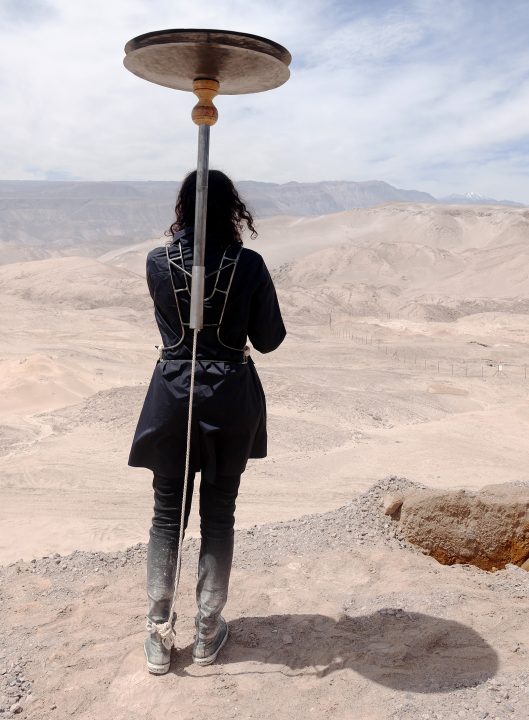
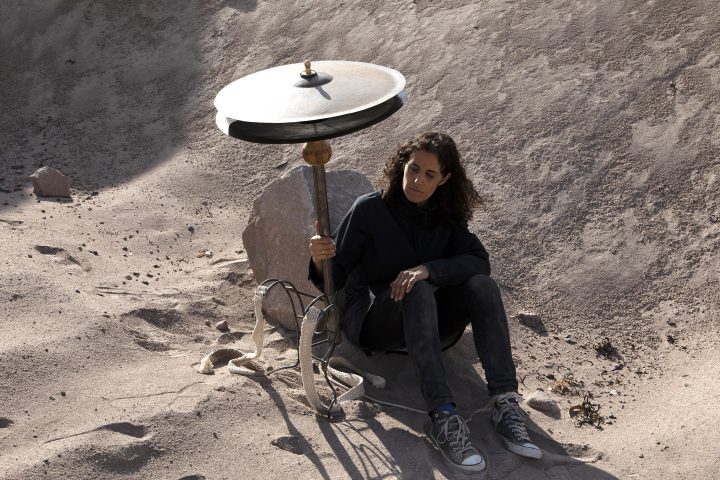
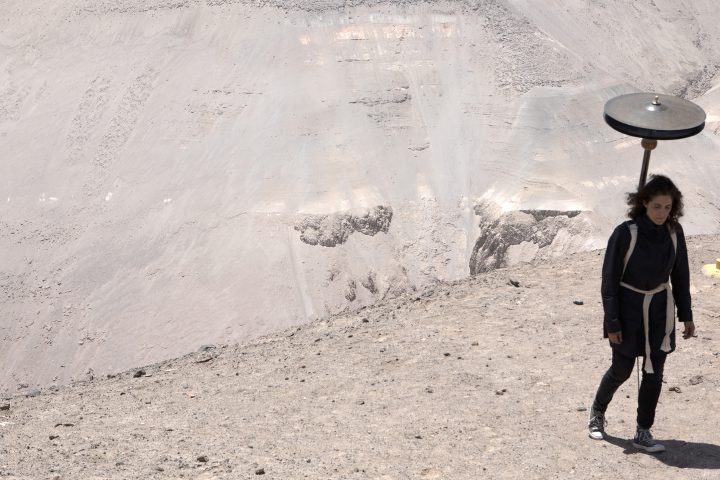
Under this dilemma, another human feature, which has a tight relationship with the organic flows that we see on these summits, is the one that spreads the globalization. This subject has cultivated different researches that in most cases border, for example, with the emerging neo-liberality of the boundaries. Globalization has generated a dialectic of identity: the greater the danger of total alignment, the greater the tendency of people to strengthen the local (territorial) dimension, as a recovered space from solidarity, perhaps as the only way to overcome the discussion between to globalize or not, opening the question of how to control this process and turn it into a development chance.[3]
With these questions on paper but from time to time keeping the gaze towards the altiplanic horizon, the visual artist Teresa Aninat, strongly influenced by the aforementioned atmosphere, wraps her willingness with the blaze aesthetic and borderlines that show to us countless paths that surround to the tripartite axis, currently shared by Bolivia, Chile and Peru.
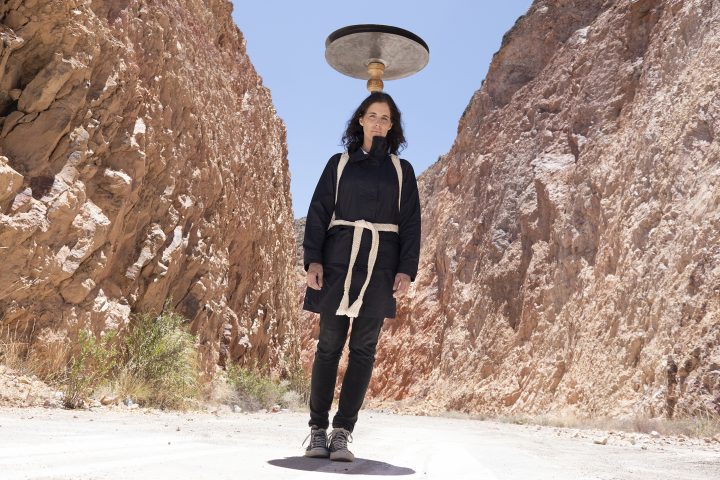
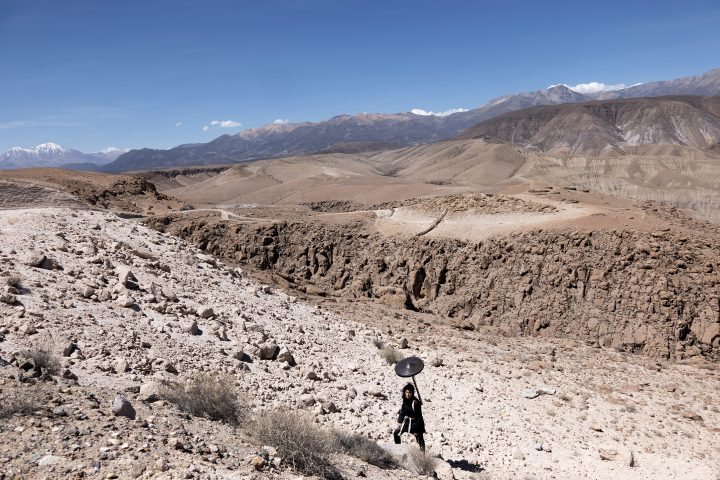
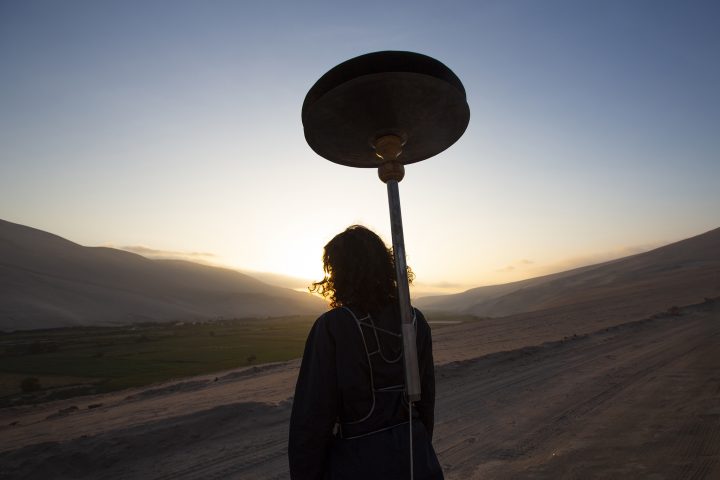
Basically Aninat has organised a walk that mixes the peculiarities that the unique geography of the north of Chile displays us, a ‘wasteland’ that is homologated to other cosmogonies. This challenge is coupled with a sculptural piece that could rather be defined as a ‘sound orthopedics ’, an object that brings together the corporality of the pilgrim and the indeterminate sounds emitted by the clashing of the cymbals. At first glance, this performance is a similar action to that performed by a ‘chinchinero’, however the central choreography of the wandering artist could fit that of a mantric percussion that appears just with the simple act of walking. Somehow, this video performance has the ability to know to see in the emptiness of places and, therefore, to know how to name these places…actually, the perception/construction of space was born from the wanderings.[4]
From another side, these tripartite axes constitute a non-place that justifies the vicissitudes of an artist to form part of those geographical landmarks where the sounds she drags enhance the tangible. It is a fact that just by watching and going through these imaginary lines –which also divide us with other countries–, we are faced with a stack of chronicles about that recent history that we share and that hardly will get together us under a single hymn, shield or flag. This scheme, which has been fractured by contemporary cartography, remarks the frequencies of an unequal territory.[5]
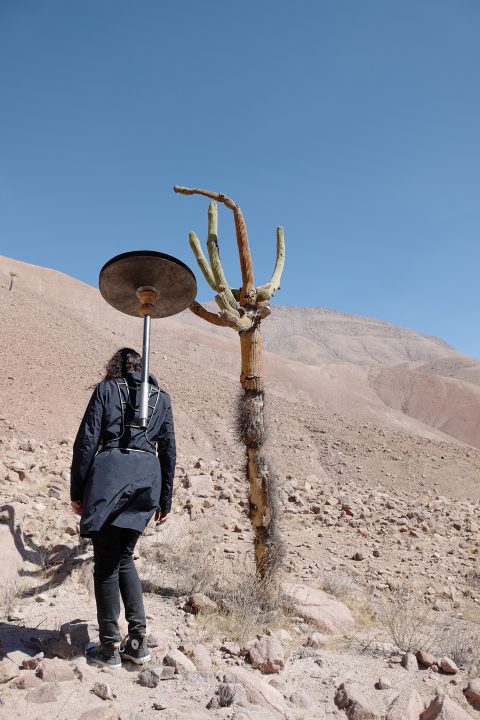
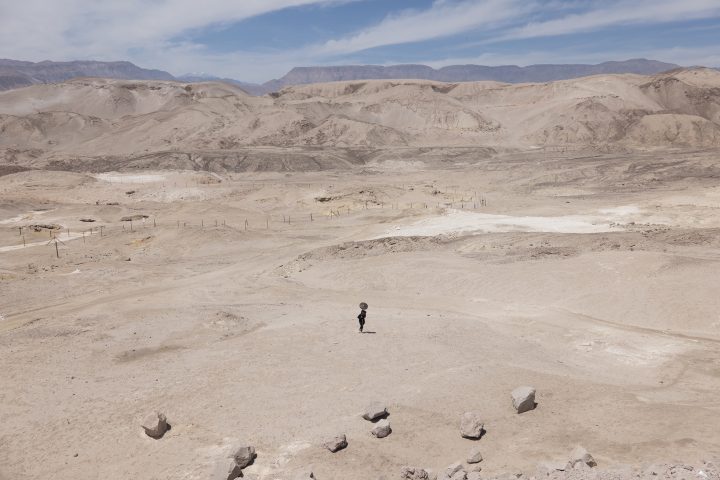
The dilemma presented by this border also translates many symbols that designate the heterogeneous vision of a whole region. In this sense, these tripartite trails, with which the desert has been condescending, alter the steps of Teresa Aninat. The result: this triple border is driven into a rumor that dialogues with the border net that fertilizes the exchange between Bolivia, Chile, and Peru, an issue that has mutated, on the one hand, the reason for wandering and, on the other, that of poetizing the sound of this complex and Mestizo area of South America.
The “Andean Frequency” is a territory that recites the verses that geography teaches her, despite this, the artist tries vigorously to re-write these verses that renew the way in which we see these nooks where nature is abrupt and incorrigible.
Finally, to compose this kind of score it is necessary to reflect both its landscapes and belongings. With this scenery, there is no doubt that an echo will resonate in our extremities. Echo that will be coupled when breathing, when listening to the watercourses, or when visualizing the mountains; a poetic profile of staying and being on those fictitious borders that are rather spaces of transit that carry an ideology strongly lead by the pacha. Aninat has already taken note of this so she will continue to wander next to the phrase: errare humanum est.
“Frecuencia Andina” (Andean Frequency) was selected as part of the programme of the recent XXI Biennial of Art of Santa Cruz de la Sierra (2020), an international event with the artistic direction of Kiosko Galería.
[1] GONZALEZ, Sergio, “Del hito a la apacheta. Bolivia-Chile: otra lectura de cien años de historia transfronteriza (1904-2004)”. Co-edited with Cristian Ovando and Ingrid Breton (Santiago: RiL editores, 2016), p. 173.
[2] BOISIER, Sergio, “Globalización, Geografía Política y Fronteras” in Revista Estudios Transfronterizos, Vol. I, Nº 1, INTE, Universidad Arturo Prat, Iquique, 2003, pp. 49-68.
[3] Ibíd., p. 51.
[4] CARERI, Francesco. “Walkscapes. El andar como práctica estética” (Barcelona: Editorial Gustavo Gili, 2009), p. 44.
[5] By mentioning borders as unequal territory, appear in my memory the projects by Korean Sanghee Song (Maehyang-ri, 2005), Bolivian Gastón Ugalde (Lipes Atacama, 2009), and Chilean Jo Muñoz (Tripartito, 2009).

 Español
Español